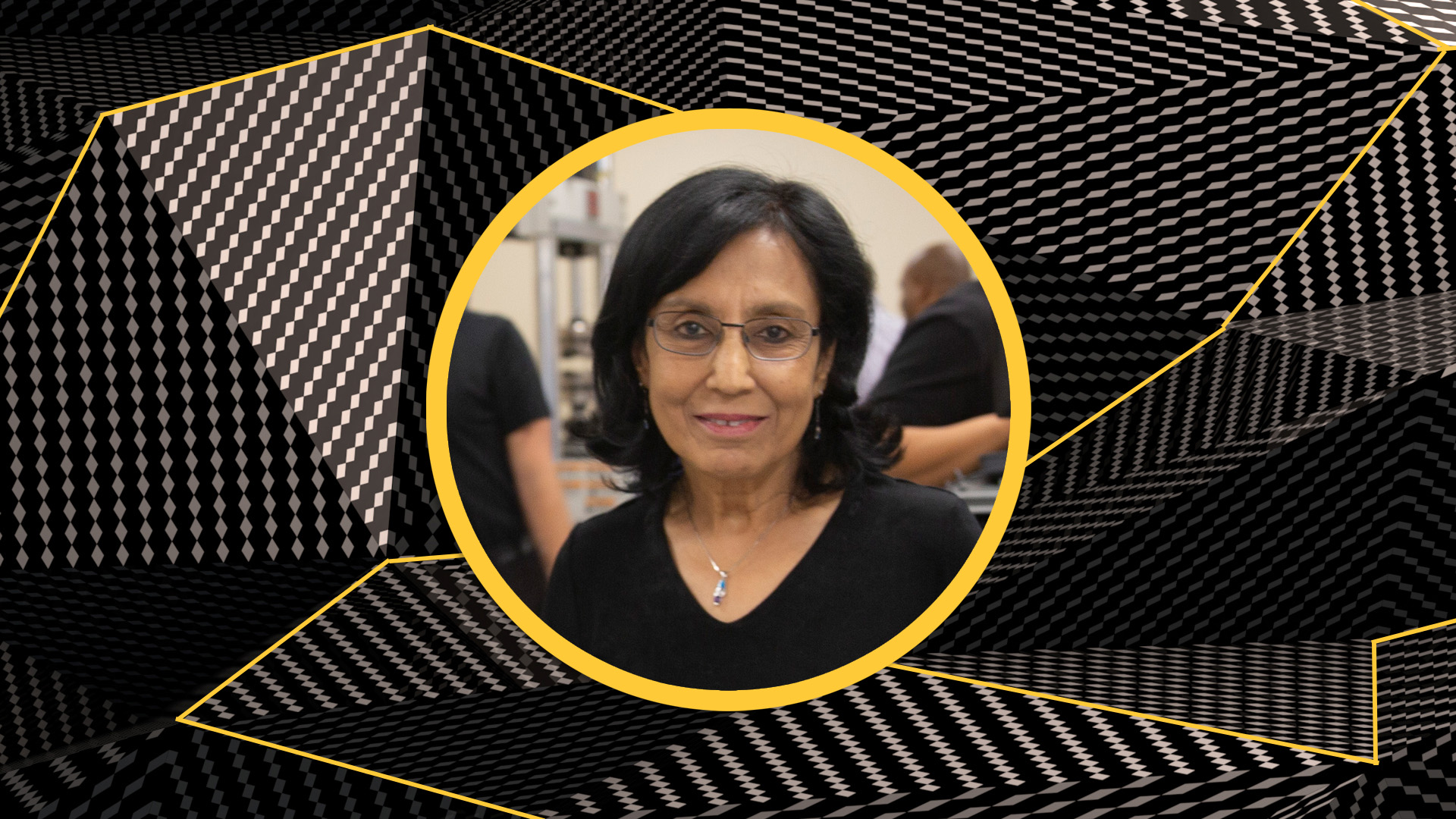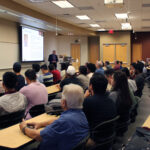
Multidisciplinary methods for intelligent materials
ASME honors ASU researcher Aditi Chattopadhyay for decades of contributions to adaptive structures and materials systems

Aditi Chattopadhyay, a Regents Professor of mechanical and aerospace engineering in the Ira A. Fulton Schools of Engineering at Arizona State University, has had an illustrious career investigating ideas in multiscale modeling, materials systems, structural health monitoring, damage prognosis and adaptive structures.
Chattopadhyay’s research endeavors across her 33-year academic career have earned her a number of accolades, the latest of which is the 2023 Adaptive Structures and Material Systems Award from the American Society of Mechanical Engineers, or ASME. The award, which recognizes significant contributions to the sciences and technologies associated with adaptive structures and materials systems, honors the lifetime achievements of a senior researcher and their sustained impact in the field.
ASME, which Chattopadhyay, a faculty member in the School for Engineering of Matter, Transport and Energy, part of the Fulton Schools, has been a fellow of since 2001, promotes interdisciplinary engineering and associated sciences and recognizes those involved in the fields worldwide by encouraging engineers to develop new skills and work together.
Chattopadhyay will be recognized in an award ceremony at the annual ASME Smart Materials, Adaptive Structures, and Intelligent Systems conference in September 2023 and will deliver a keynote lecture at the conference.
“I’m deeply honored to receive this award and am very grateful for this recognition by my peers, especially the nomination by Dr. Lenore Dai,” Chattopadhyay says. “There was a time when the concepts of smart materials and adaptive structures were dismissed as impossible, so the recognition is especially meaningful.”
Dai commends her colleague on receiving the ASME award.
“This recognition is well deserved,” Dai says. “Aditi has made consistent and significant contributions to the fields of multifunctional materials, computational mechanics and material characterization with a focus on adaptive structures and materials.”
Integrative innovations
Much of Chattopadhyay’s research explores fundamental attributes of complex materials and systems to improve their performance and durability.
Her current work, which includes work for the U.S. military, NASA and the U.S. Department of Energy, focuses on multiscale modeling, structural health monitoring and damage prognosis as well as developing sensing systems, autonomous materials capable of performing complex functions in response to changes in the environment and composite materials that can withstand high temperatures.
As director of ASU’s Adaptive Intelligent Materials & Systems, or AIMS, Center, Chattopadhyay heads an ever-expanding list of projects, advancing research and technologies that straddle interdisciplinary boundaries. She and her colleagues in the AIMS Center develop smart composite materials and adaptive systems through advances made in individual disciplines while encouraging entrepreneurship through technology transfer to industry.
Composite materials consist of two or more materials with different physical or chemical properties that combine to form a substance stronger or better suited to certain applications. However, limited knowledge of operational environment resistance, damage tolerance, and durability limit composite materials’ applications. To improve safety, researchers must be able to predict potential issues with a structure made from composite materials.
“We must understand how damage initiates in an operational environment,” Chattopadhyay says. “What contributes to total damage mechanisms that you see at the structural scale? Structures have multiple potential sites of damage initiation, so we implement a process known as structural health monitoring, which is a damage identification strategy for materials.”
Structural health monitoring projects inform future innovation in smart materials. Sensors incorporated into a material’s design can be used for applications like detecting a crack in an airplane part as soon as the material is compromised, before it is visible externally. By making the material self-sensing, the damage can be identified before the structure becomes unsafe.
An interdisciplinary research effort under the joint leadership of Chattopadhyay and Dai, a professor of chemical engineering and the vice dean of faculty administration in the Fulton Schools, aims to develop materials that are self-sensing and self-healing.
Chattopadhyay says managing the different purposes of a multifunctional material is a delicate balance. A material with high temperature tolerance and electrical properties may not have acceptable mechanical properties.
“We need to combine material mechanochemistry, which is the field at the intersection of chemistry and mechanical engineering, to understand the origin of the multifunctional behavior and optimize materials’ performance,” Chattopadhyay says.
Chattopadhyay’s goal is to develop a unified framework for designing intelligent and adaptive systems by combining knowledge from an array of disciplines, solving large-scale problems with direct impacts on aerospace and mechanical systems. Finding solutions to such complex problems requires an interdisciplinary mindset.
“The idea of multidisciplinary connectivity is something I try to pass onto my students,” Chattopadhyay says. “They need to go outside their comfort zone, challenge convention.”
Empathetic education
Chattopadhyay’s unique approach to teaching and research has earned the admiration of her peers and students.
Travis Skinner, who graduated with his doctoral degree in mechanical engineering in May 2021, worked with Chattopadhyay in her lab as an undergraduate student on a Fulton Undergraduate Research Initiative project. Chattopadhyay also served as Skinner’s thesis advisor during his graduate career. Without Chattopadhyay’s influence, Skinner says it’s unlikely he ever would have pursued his doctoral degree.
“She was always very encouraging, and her management style was refreshing for me,” Skinner says. “She showed us processes, then gave us the freedom to ask questions and find the answers, which I think is valuable when doing fundamental research.”
After earning his doctoral degree, Chattopadhyay helped Skinner secure a position as a structural analysis engineer at Raytheon Missiles & Defense.
“She does a great job making sure her students are taken care of after graduation,” Skinner says, noting Chattopadhyay reaches out to research lab and industry contacts to connect her newly graduated students to job opportunities.
Mohamed Hamza, a mechanical engineering doctoral student, says the freedom Chattopadhyay gives students to investigate their research interests keeps students, including himself, engaged in learning.
“Dr. Chattopadhyay offers students exposure to funding agencies and industrial collaborators through participation in review meetings and student poster presentations,” Hamza says. “Her interdisciplinary mindset also encourages students from different concentrations to step out of their comfort zones.”
Chattopadhyay’s direct graduate advising has supported 45 doctoral and 25 master’s degree students and counting, thanks in no small part to this supportive approach.
“I tell all my student researchers that the day you’re dreading coming to the lab is the day you should come and talk to me,” Chattopadhyay says. “That’s not how you do research. You should feel that it’s your work, and you’re doing it for yourself. That’s what my group philosophy is all about.”



































